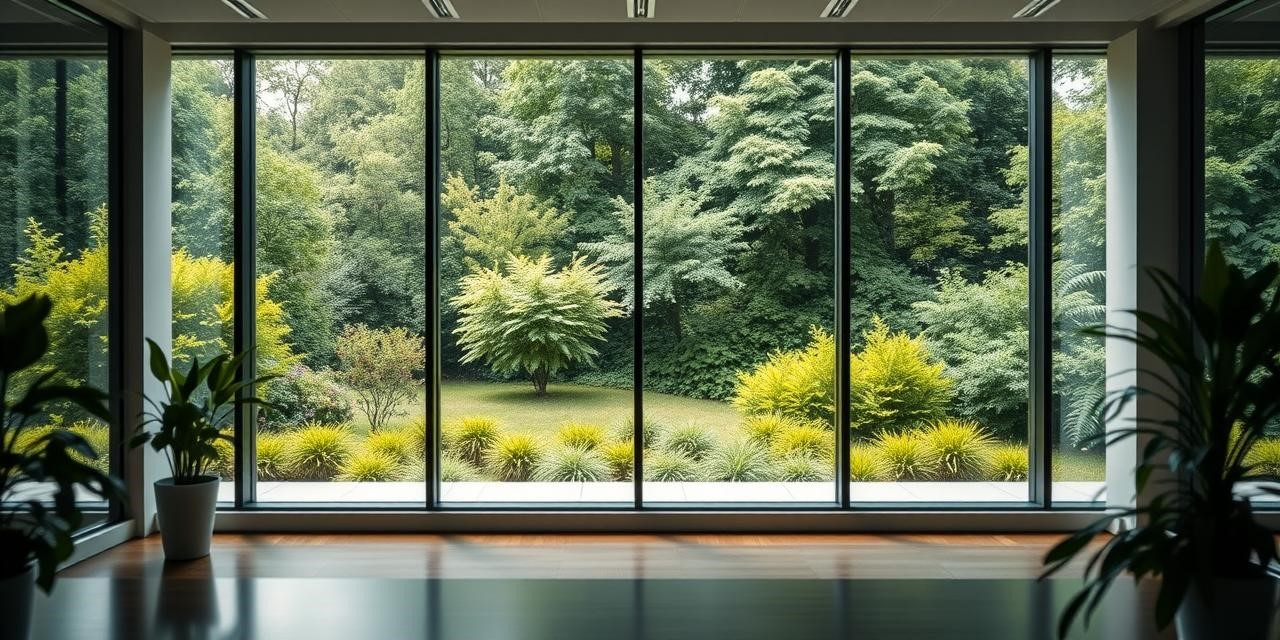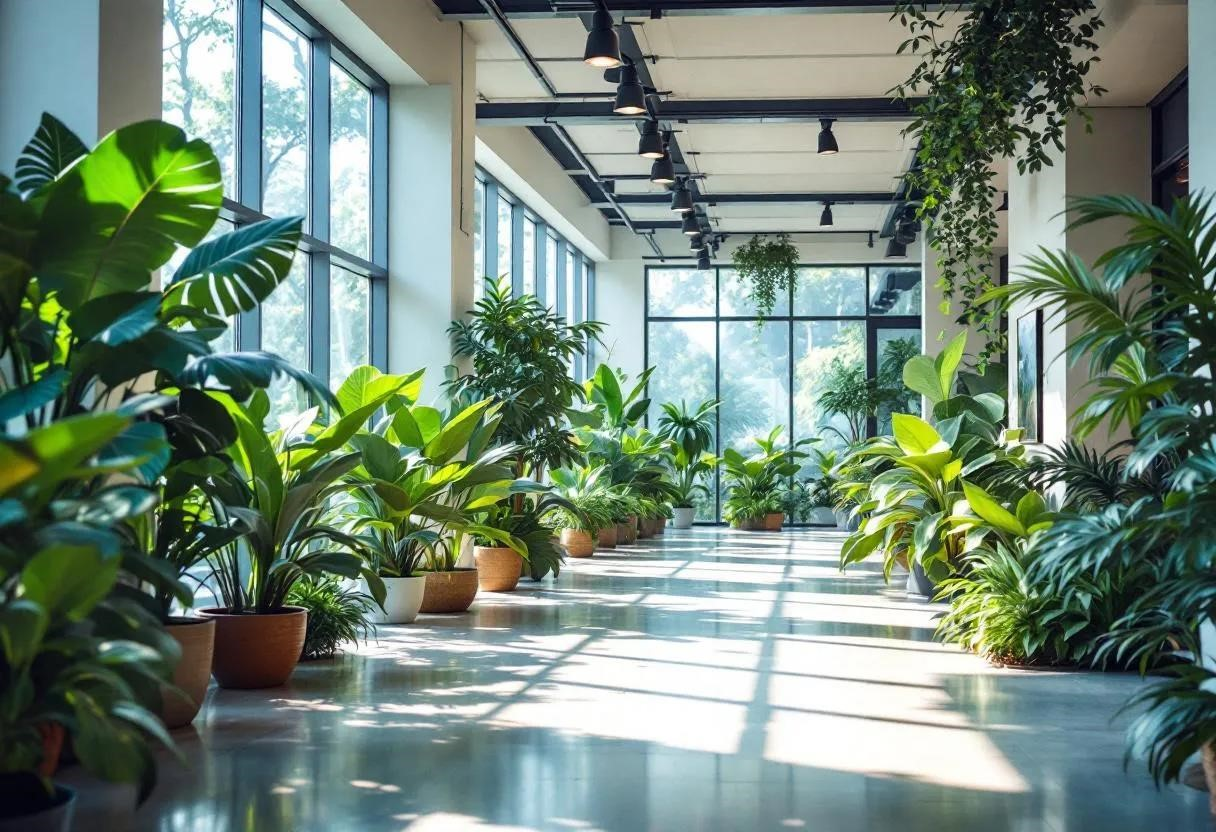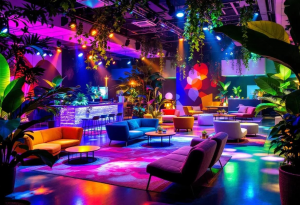Let’s face it: for too long, architecture has felt… sterile. All about efficiency, forgetting about us, the people who actually use the spaces. But what if buildings could actually make our lives better? Calmer? More creative? More connected? That’s the amazing potential of biophilic design, and it’s catching fire in contemporary architecture.
As someone who’s obsessed with sustainable, human-focused design, I’ve seen firsthand how powerful it is to bring nature inside. It’s way more than just sticking a few plants in a corner. It’s about crafting spaces that tap into our deep, primal connection with the natural world.
What’s the Big Deal with Biophilic Design?
Simply put, biophilic design is about connecting buildings and people with nature. “Biophilia” is a fancy word coined by biologist E.O. Wilson. It means we humans have a built-in love for nature. So, biophilic design tries to scratch that itch by weaving natural elements, patterns, and processes right into the architecture.
Think of it as an antidote to modern urban life. We’re stuck indoors all the time, cut off from nature’s rhythms and beauty. Biophilic design is about bridging that gap, creating spaces that aren’t just functional boxes, but places that restore and inspire us.
A Quick Trip Through History
This isn’t exactly a brand-new idea. Cultures have been instinctively using natural elements in buildings forever. Remember those cool courtyards in Roman villas? Or the mind-blowing gardens in traditional Chinese architecture? And how about using natural materials like wood and stone in old-school buildings? Those were all early versions of biophilic design.
But it wasn’t really a thing until recently. The concept started gaining steam in the ’80s and ’90s. Why? Because people were realizing that modern buildings were messing with our health and happiness. Researchers started proving that nature chills us out, sharpens our minds, and makes us healthier overall. Finally, science backed up what we already knew: nature is good for us!

The Key Ingredients: What Makes it Biophilic?
Biophilic design uses a bunch of different tricks to create that connection with nature. Here’s the breakdown:
- Get Up Close and Personal with Nature: Think natural light flooding in, fresh air flowing, plants thriving, water features bubbling, and killer views of the great outdoors.
- Nature by Proxy: This is about using natural materials, colors, patterns, and shapes in the design. Even mimicking natural processes, like how air moves or how light changes, counts!
- Space and Place Magic: Creating spaces that feel like a safe haven, offer a great view, or spark your curiosity. Think of those natural spots that make you feel both secure and excited.
Let’s dig into some examples, shall we?
- Let There Be Light (and Air!): Maximize that sweet, sweet natural light and fresh air. Big windows, skylights, and windows that actually open are key.
- Plants, Glorious Plants (and Green Walls!): Indoor and outdoor plants are your friends. They clean the air, zap stress, and make everything look better. Green walls are especially awesome because they bring a ton of nature to a small space.
- Water, Water Everywhere: The sound and sight of water are super relaxing. Fountains, waterfalls, even little ponds can create a peaceful vibe.
- Go Natural with Materials: Wood, stone, bamboo, cork… these materials create a warm, inviting feeling. Plus, they’re usually sustainable, which is a win-win.
- Nature’s Shapes and Patterns: Spirals, fractals, curvy lines… these are all found in nature. Using them in design creates a sense of harmony that just feels right.
Real-World Examples: Seeing is Believing
Want to see biophilic design in action? Check out these awesome projects:
- The Crystal (London, UK): This place is all about sustainability, with a green roof, rainwater system, and tons of natural light and ventilation. The goal? To be eco-friendly and create a healthy, productive place to work.
- Khoo Teck Puat Hospital (Singapore): This hospital is designed to help people heal, thanks to all the nature around. Think gardens, courtyards, and water features that give patients and staff a dose of the natural world.
- Amazon Spheres (Seattle, USA): These crazy glass domes are like indoor rainforests, giving Amazon employees a unique and immersive workspace. The idea is to boost creativity, teamwork, and that feeling of being connected to nature.
Why Bother? The Awesome Benefits of Biophilic Design
This isn’t just about making things look pretty. Biophilic design can seriously boost our health, productivity, and overall well-being.
- Healthier and Happier: Studies show that biophilic design can lower stress, blood pressure, and improve your mood. Plus, being around nature can help hospital patients recover faster.
- Work Like a Rockstar: Employees in biophilic spaces are more productive, creative, and engaged. Natural light, fresh air, and nature views create a more inspiring place to work.
- Smarter Students: Biophilic design can even help students learn better. Studies show that kids with access to nature do better on tests and pay more attention in class.
- Go Green: Biophilic design often includes sustainable practices like using natural materials, saving energy, and protecting biodiversity. It’s all about creating a more sustainable future.
Not All Sunshine and Roses: Challenges to Consider
Okay, so biophilic design is amazing, but there are a few things to keep in mind:
- The Cost Factor: Adding biophilic elements can sometimes cost more upfront. But remember the long-term payoff: lower energy bills, happier employees, and healthier people.
- Maintenance Matters: Plants, water features, and other natural elements need upkeep. Factor those costs into your planning.
- Culture Counts: What works in one place might not work in another. Consider the local climate, traditions, and preferences when designing a biophilic space.
What’s Next? The Future of Biophilic Design
As we learn more about the benefits of biophilic design, it’s going to become a bigger deal in architecture and city planning. And new tech is making it even cooler.
- Smart Buildings Meet Nature: Imagine buildings that automatically adjust to your needs, thanks to sensors that monitor air quality, temperature, and light. That’s the power of combining biophilic elements with smart building tech.
- Virtual Nature: VR and AR can create amazing natural environments, even when you can’t have real nature. This is perfect for cities or buildings with limited natural light.
- Copying Nature: Biomimicry is all about learning from nature’s designs. By studying how nature solves problems, we can create innovative architectural solutions that are sustainable and beautiful.
The bottom line? The future of architecture is about creating buildings that are functional, efficient, and deeply connected to nature. Biophilic design gives us a way to do that, creating spaces that make us feel good, spark our creativity, and remind us that we’re part of something bigger.
Let’s build a world where our buildings take care of us, just like nature intended.


